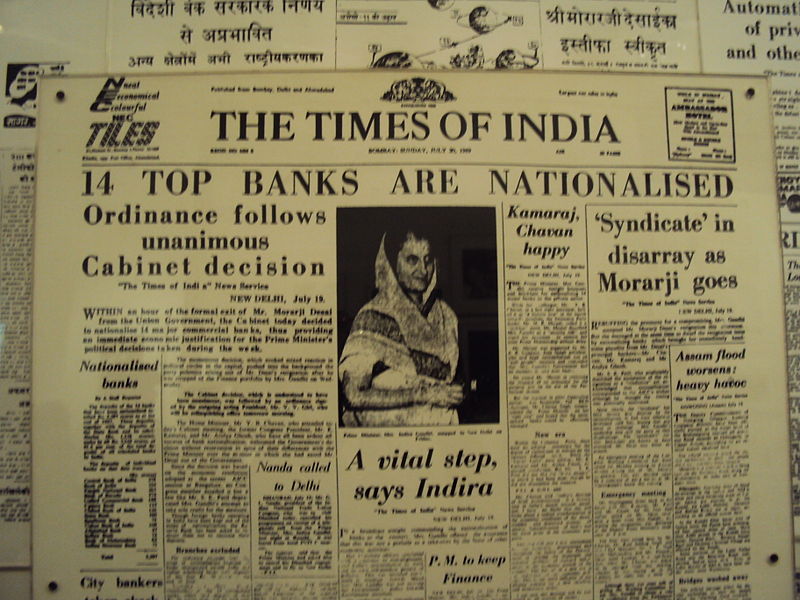Nationalization is the main turning point in the history of Indian banks. After nationalization all banks were under the control of central government. Without a sound and effective banking system in India it cannot have a healthy economy. The banking system of India should not only be hassle free but it should be able to meet new challenges posed by the technology and any other external and internal factors. For the past three decades India’s banking system has several outstanding achievements to its credit. The most striking is its extensive reach. It is no longer confined to only metropolitans or cosmopolitans in India. In fact, Indian banking system has reached even to the remote corners of the country. This isContinue reading
Indian Financial System
Scenario of Indian Banking Sector in Pre and Post Reform Period
Scenario of Indian Banking Sector in Pre Reform Period Banking is an ancient business in India. Initially, the growth of Indian banks was very slow and also experienced periodic failures between 1913 and 1948. To streamline the functioning and activities of commercial banks, the Government of India came up with The Banking Companies Act, 1949 which was later changed to Banking Regulation Act, 1949 as per amending Act of 1965 (Act No. 23 of 1965). During those days, public had lesser confidence in the banks. As an aftermath deposit mobilization was slow. Government took major steps in Indian banking sector reform after independence. On 19th July 1969, major process of nationalization was carried out. It was the effort of theContinue reading
Indian Banking Sector Reforms in 1991
In 1991, the country was caught into a deep crisis. The government at this juncture decided to introduce comprehensive economic reforms. The banking sector reforms were part of this package. The main objective of Indian banking sector reforms was to promote a diversified, efficient and competitive financial system with the ultimate goal of improving the allocative efficiency of resources through operational flexibility, improved financial viability and institutional strengthening. Many of the regulatory and supervisory norms were initiated first for the commercial banks and were later extended to other types of financial intermediaries. While nudging the Indian banking system to better health through the introduction of international best practices in prudential regulation and supervision early in the reform process, the mainContinue reading
Export Credit Guarantee Corporation of India (ECGC)
In order to provide export credit and insurance support to Indian exporters, the GOI set up the Export Risks Insurance Corporation (ERIC) in July, 1957. It was transformed into export credit guarantee corporation limited (ECGC) in 1964. Since 1983, it is now know as ECGC of India Ltd. ECGC is a company wholly owned by the Government of India. It functions under the administrative control of the Ministry of Commerce and is managed by a Board of Directors representing government, Banking, Insurance, Trade and Industry. The ECGC with its headquarters in Bombay and several regional offices is the only institution providing insurance cover to Indian exporters against the risk of non-realization of export payments due to occurrence of the commercialContinue reading
Regulatory Provisions in FEMA with Respect to Current Account & Capital Account
Current Account Transactions Current Account Transactions as defined in Section 2 (j) of FEMA, means a transaction other than a capital account transaction and without prejudice to the generality of the other provisions shall include: payments due in connection with foreign trade, other account current business, services and short term banking and credit facilities in tire ordinary course of business; payments due as interest on loans and as net income from the investments; remittances for living expenses of parents, spouse and children resid ing abroad; expenses in connection with foreign travel, education and medical care of parents, spouse and children. Provisions to Section 5 of FEMA empowers the Central Government in public interest and in consultation with the Reserve BankContinue reading
Prevention of Money laundering Act
Introduction:- Money laundering involves disguising financial assets so that they can be used without detection of the illegal activity that let to its production. Through the process of “money laundering” a person converts illegal money into a legal entity. Whosoever directly or indirectly attempts to indulge or knowingly assists or knowingly is a party or is actually involved in any process or activity connected with the proceeds of crime and projecting it as untainted property shall be held guilty of the offence of money laundering. The Schedule to the Prevention of Money Laundering Act (henceforth, PMLA), 2002, lists some of the offences under the following Legislations: Offences under the India Penal Code (part A) – eg. Waging or attempting toContinue reading
